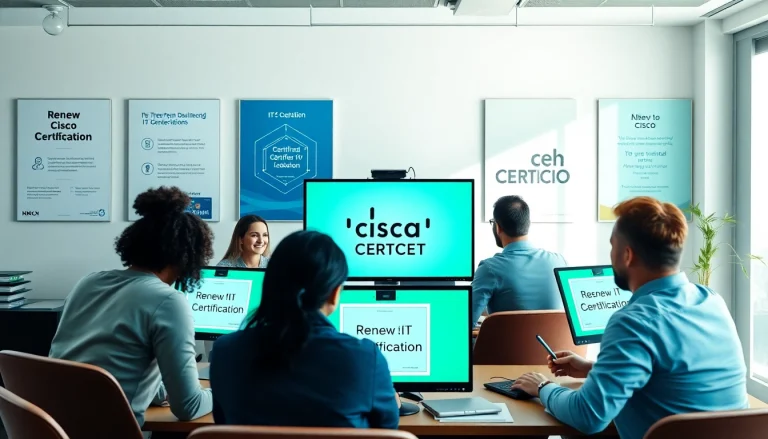
Understanding the Virtual Audience System
What is a Virtual Audience System?
A Virtual Audience System is an innovative platform designed to create engaging, interactive experiences for audiences participating in virtual events. It allows presenters to connect with viewers in real-time, enabling a two-way communication channel that was previously limited to in-person gatherings. This technology is instrumental in expanding the scope of events such as webinars, conferences, and even live performances, by transforming passive viewers into proactive participants.
The Evolution of Virtual Interaction
The concept of virtual interaction has dramatically evolved over the past few decades. Initially, interactions were limited to text-based chat systems and static video streams. However, advancements in technology have paved the way for multimedia capabilities, including live polling, Q&A sessions, and interactive chat functions that enhance viewer participation. The COVID-19 pandemic accelerated this evolution, necessitating platforms that could facilitate online engagement and community-building like never before.
Benefits of Using a Virtual Audience System
Adopting a Virtual Audience System provides numerous benefits for both organizers and participants:
- Accessibility: Events can be attended from anywhere in the world, breaking geographical barriers.
- Cost Efficiency: Reduces expenses related to travel, venue rentals, and logistical arrangements.
- Data Collection: Captures audience metrics and engagement data, aiding in future planning.
- Scalability: Able to accommodate a vast number of participants without the limitations of physical venues.
Key Features of an Effective Virtual Audience System
Interactive Tools for Engagement
To foster meaningful engagement, a robust Virtual Audience System must include various interactive tools such as:
- Live Chat Functions: Enable instant communication between the audience and presenters.
- Polls and Surveys: Allow for real-time feedback and audience participation, making events more dynamic.
- Virtual Networking Opportunities: Facilitate connections among attendees, enhancing community feeling.
Analytics and Performance Metrics
Another crucial aspect of an effective Virtual Audience System is its ability to provide analytics and performance metrics. Insights into audience behavior, engagement levels, and feedback can guide organizers in refining their approach for future events. Detailed reports on attendance rates, peak engagement times, and participant interactions can illuminate what works well and what needs adjustment.
User-Friendly Interfaces and Accessibility
The effectiveness of any Virtual Audience System hinges on usability. A user-friendly interface is vital not only for organizers but also for audience members who might not be tech-savvy. Accessibility features, such as subtitle options and compatibility with various devices, ensure a wider reach, allowing everyone to participate fully.
Implementing a Virtual Audience System
Step-by-Step Setup Guide
Implementing a successful Virtual Audience System involves several critical steps:
- Define Your Objectives: Clearly outline what you aim to achieve with your virtual event.
- Choose the Right Platform: Research and select a Virtual Audience System that aligns with your needs and budget.
- Set Up the Technology: Test all required technology and tools, including audio/visual setups.
- Engagement Planning: Design your agenda with audience interaction opportunities integrated throughout.
- Marketing Your Event: Promote your event through the appropriate channels to ensure maximum attendance.
- Conduct a Rehearsal: Have a dry-run with all speakers and hosts to plan for any potential tech glitches.
Best Practices for Seamless Integration
Following best practices can significantly enhance your Virtual Audience System integration:
- Communicate Clearly: Provide detailed instructions to attendees on how to join and interact.
- Engage Before the Event: Use pre-event communication to build anticipation and familiarize attendees with the platform.
- Maintain Open Channels: Have support staff ready to assist with any issues that may arise during the event.
- Solicit Feedback: After the event, reach out to participants for feedback to enhance future experiences.
Common Mistakes to Avoid
While virtual events can be rewarding, certain pitfalls can hinder their success. Avoid the following common mistakes:
- Neglecting Engagement: Failing to incorporate interactive elements can lead to a passive audience.
- Ignoring Technical Issues: Not addressing technical challenges prior to the event can result in poor experiences.
- Overloading with Information: Presenting too much information at once can overwhelm attendees.
- Forgetting Follow-ups: Neglecting post-event engagement can diminish the impact of your virtual event.
Real-World Applications of the Virtual Audience System
Case Studies from Various Industries
Various industries have successfully deployed Virtual Audience Systems to achieve remarkable outcomes. For instance, the education sector has embraced online classrooms, allowing institutions to provide seamless learning experiences during disruptions, like the pandemic. Additionally, the corporate sector has utilized virtual town halls to foster company culture and keep remote employees engaged.
Success Stories of Increased Engagement
Numerous success stories highlight the power of Virtual Audience Systems:
- Virtual Conferences: A leading tech firm held a global virtual conference, attracting a record number of participants and achieving higher engagement rates than its previous in-person events.
- Webinars for Thought Leadership: An educational organization used webinars to position themselves as thought leaders in their field, resulting in a significant uptick in membership and participation.
Impact on Event Planning and Execution
The integration of Virtual Audience Systems has permanently altered event planning and execution. Planners can now reach wider demographics while optimizing costs and attendee engagement. Virtual formats provide the opportunity to include diverse speakers and offer flexible scheduling, making attendance easier for participants worldwide.
The Future of Virtual Audience Systems
Trends in Virtual Interaction Technology
The future of Virtual Audience Systems is set to be driven by several emerging trends:
- AR and VR Integration: Augmented and virtual realities will enhance immersion and engagement during events.
- AI Utilization: Artificial intelligence will facilitate more personalized experiences, delivering content tailored to individual attendee preferences.
- Increased Gamification: Incorporating gamification elements will likely become standard to increase audience involvement and retention.
Predictions for User Experience Enhancements
As technology advances, user experience within Virtual Audience Systems is expected to improve dramatically. Anticipated enhancements include:
- Multi-language support to accommodate global audiences.
- Simpler user interfaces designed for effortless navigation.
- Adaptive streaming capabilities for varying internet speeds, ensuring consistent quality.
Preparing for the Next Level of Audience Engagement
To stay ahead of the curve, organizations need to continuously invest in their Virtual Audience Systems. This involves keeping pace with technological advancements and emerging trends. Regularly soliciting audience feedback will be crucial in refining and enhancing their experiences. Organizations that prioritize innovation and user needs are best poised to thrive in the next generation of virtual engagement.






